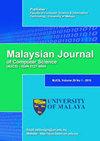设计基于深度学习的金融科技金融决策支持系统,支持企业客户的授信
IF 1.2
4区 计算机科学
Q4 COMPUTER SCIENCE, ARTIFICIAL INTELLIGENCE
引用次数: 1
摘要
在银行业务中,机器学习(ML)对于避免财务损失至关重要。信用风险评估可能是最重要的预测任务,每年可能导致数十亿美元的损失(即债务违约的风险)。梯度增强决策树(GBDT)模型现在在机器学习预测信用风险方面有很大的改进。然而,如果不添加昂贵的新数据源或精心设计的功能,这些改进就会开始停滞不前。在这项工作中,我们描述了我们为开发一种独特的基于深度学习(DL)的技术来评估信用风险所做的努力,该技术不依赖于额外的模型输入。我们提出了一种新的信贷决策支持方法,采用门控循环单元(GRU)和卷积神经网络(CNN),该方法使用冗长的金融数据历史序列,同时需要很少的资源。我们表明,使用术语频率-逆文档频率(TF-IDF)预分类器的深度学习技术优于基准模型,从而节省了大量成本并实现了早期信用风险识别。我们还展示了如何在生产环境中使用我们的方法,其中我们的采样方法允许将序列有效地保存在内存中,并用于快速在线学习和推理。本文章由计算机程序翻译,如有差异,请以英文原文为准。
DESIGNING A DEEP LEARNING-BASED FINANCIAL DECISION SUPPORT SYSTEM FOR FINTECH TO SUPPORT CORPORATE CUSTOMER’S CREDIT EXTENSION
In the banking business, Machine Learning (ML) is critical for averting financial losses. Credit risk evaluation is perhaps the most important prediction task that may result in billions of dollars in damages each year (i.e., the risk of default on debt). Gradient Boosted Decision Tree (GBDT) models are now responsible for a large portion of the improvements in ML for predicting credit risk. However, these improvements begin to stagnate without adding pricey new data sources or carefully designed features. In this work, we describe our efforts to develop a unique Deep Learning (DL)-based technique for assessing credit risk that does not rely on additional model inputs. We present a new credit decision support approach with Gated Recurrent Unit (GRU) and Convolutional Neural Networks (CNN) that uses lengthy historical sequences of financial data while requiring few resources. We show that our DL technique, which uses Term Frequency-Inverse Document Frequency (TF-IDF) pre-classifiers, outperforms the benchmark models, resulting in considerable cost savings and early credit risk identification. We also show how our method may be utilized in a production setting, where our sampling methodology allows sequences to be effectively kept in memory and used for quick online learning and inference.
求助全文
通过发布文献求助,成功后即可免费获取论文全文。
去求助
来源期刊

Malaysian Journal of Computer Science
COMPUTER SCIENCE, ARTIFICIAL INTELLIGENCE-COMPUTER SCIENCE, THEORY & METHODS
CiteScore
2.20
自引率
33.30%
发文量
35
审稿时长
7.5 months
期刊介绍:
The Malaysian Journal of Computer Science (ISSN 0127-9084) is published four times a year in January, April, July and October by the Faculty of Computer Science and Information Technology, University of Malaya, since 1985. Over the years, the journal has gained popularity and the number of paper submissions has increased steadily. The rigorous reviews from the referees have helped in ensuring that the high standard of the journal is maintained. The objectives are to promote exchange of information and knowledge in research work, new inventions/developments of Computer Science and on the use of Information Technology towards the structuring of an information-rich society and to assist the academic staff from local and foreign universities, business and industrial sectors, government departments and academic institutions on publishing research results and studies in Computer Science and Information Technology through a scholarly publication. The journal is being indexed and abstracted by Clarivate Analytics'' Web of Science and Elsevier''s Scopus
 求助内容:
求助内容: 应助结果提醒方式:
应助结果提醒方式:


